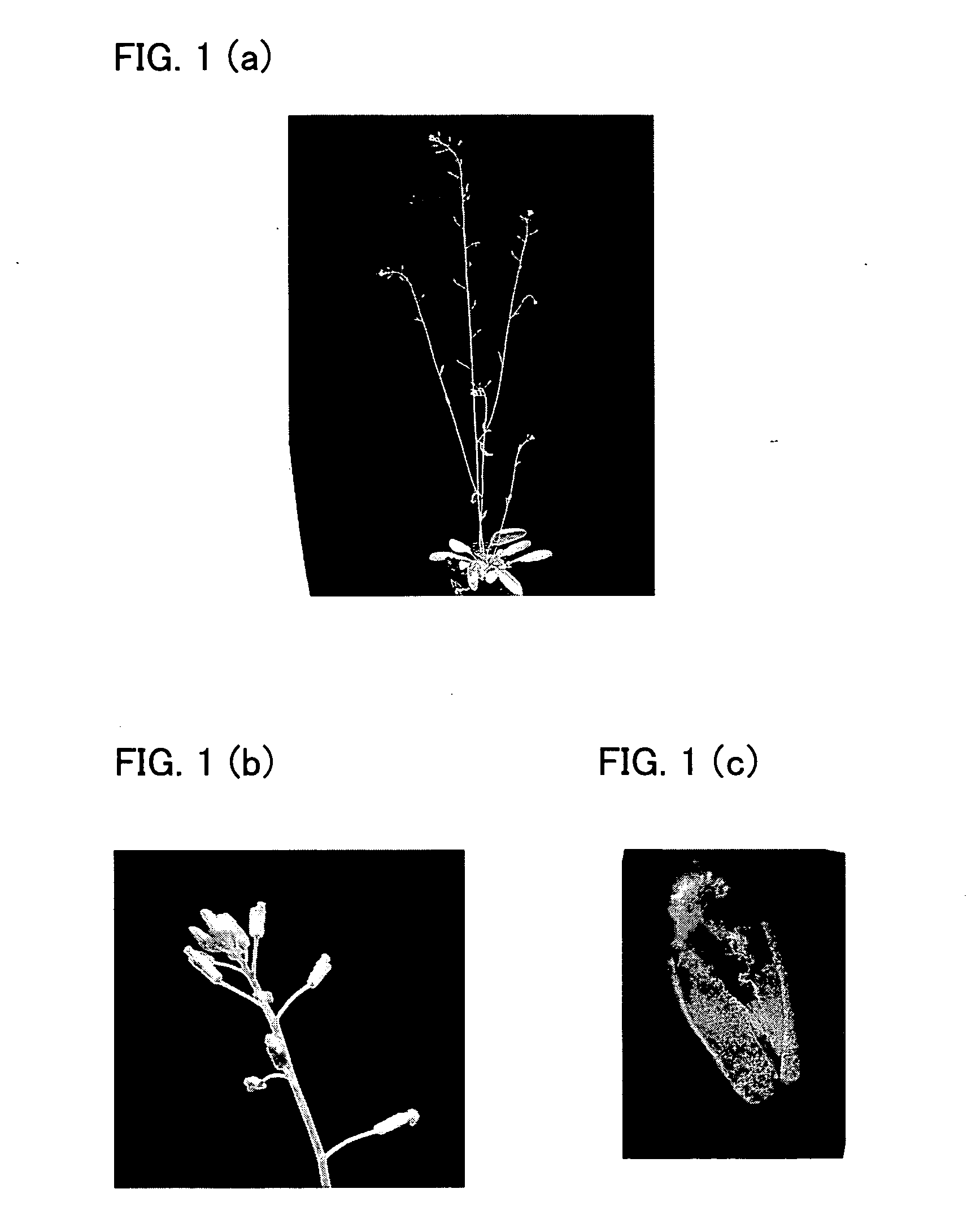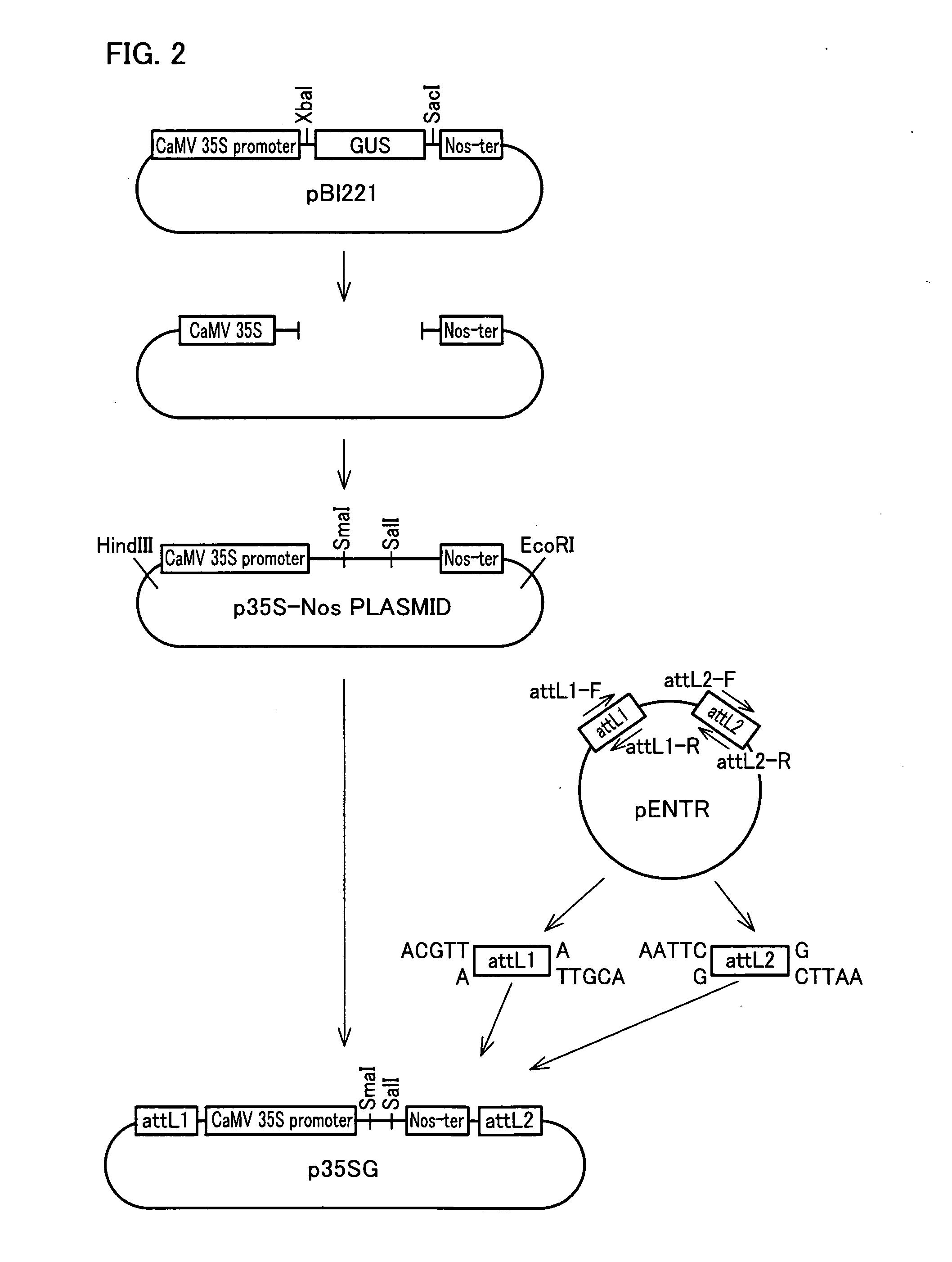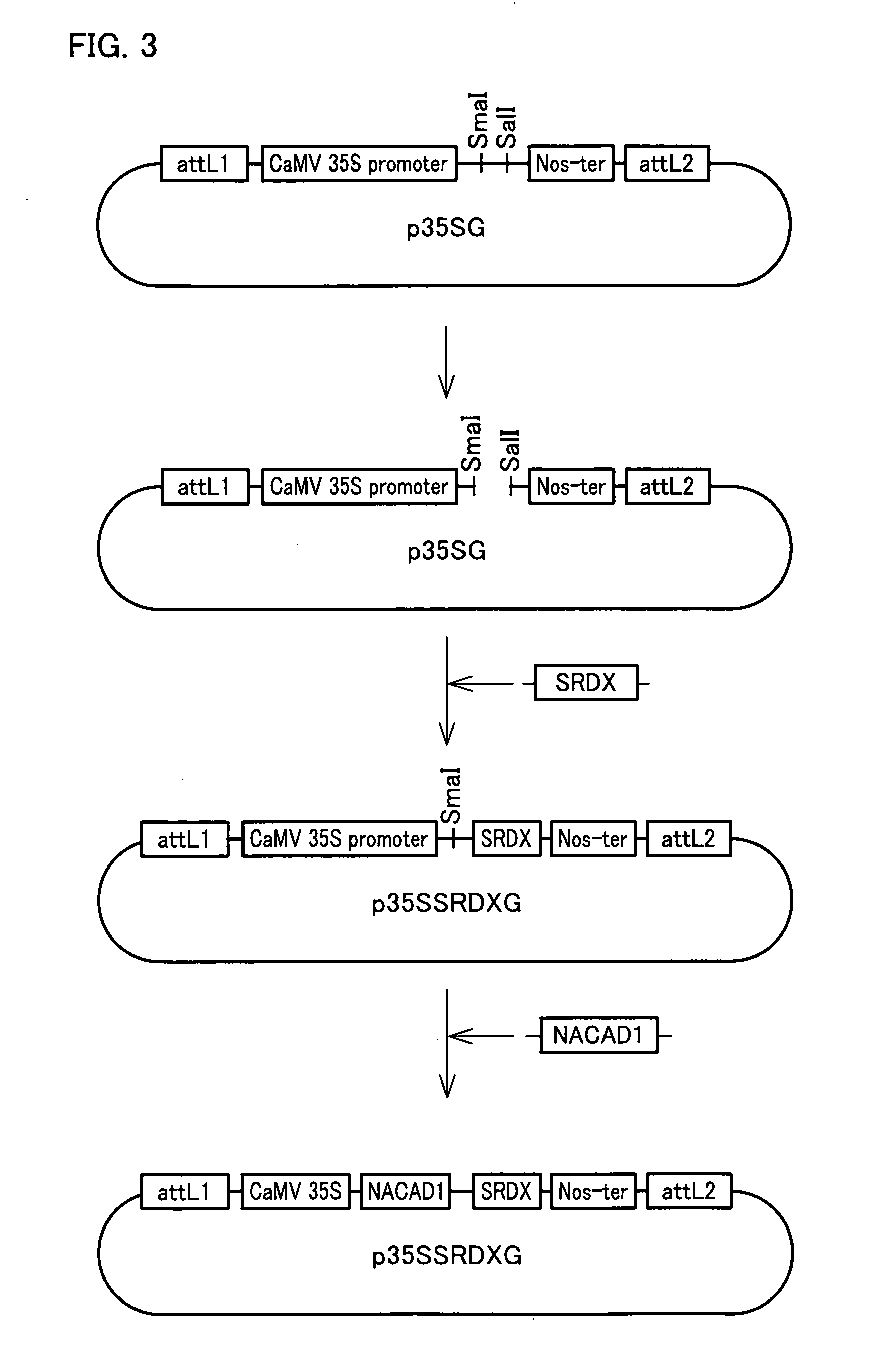Producing process of sterile plants, plants obtained by the process, and use of the plants
a sterile plant and production process technology, applied in the direction of plant cells, fermentation, biochemistry apparatus and processes, etc., can solve the problems of difficult to avoid self-pollination, long interbreeding time, and labor intensive and time-consuming, and achieve easy and reliable production, suppress the effect of target gene transcription, and suppress the dehiscence of anther
- Summary
- Abstract
- Description
- Claims
- Application Information
AI Technical Summary
Benefits of technology
Problems solved by technology
Method used
Image
Examples
example 1
[0331]In this Example, a recombinant expression vector was constructed in which a polynucleotide that encodes a 12-amino acid peptide LDLDLELRLGFA (SRDX) (SEQ ID NO: 17), one kind of transcription repressor converting peptide, is ligated to APETALA3 gene and the downstream side of a cauliflower mosaic virus 35S promoter that becomes functional in a plant cell. The recombinant expression vector was then introduced into Arabidopsis thaliana by an Agrobacterium method, so as to transform the plant.
[0332](1) Construction of Plant Transformation Vector pBIG2
[0333]The plasmid p35S-GFP of Clontech, USA was excised with restriction enzymes HindIII and BamHI, and DNA fragments including the cauliflower mosaic virus 35S promoter were collected after separation by agarose gel electrophoresis.
[0334]Plant transformation vector pBIG-HYG provided by Michigan University (Backer, D. 1990 Nucleic Acid Research, 18:203) was excised with restriction enzymes HindIII and SstI, and DNA fragments with no G...
example 2
[0352]In this Example, a recombinant expression vector was constructed in which a polynucleotide that encodes 12-amino acid peptide LDLDLELRLGFA (SRDX) (SEQ ID NO: 17), one kind of transcription repressor converting peptide, is ligated to the downstream side of NACAD1 gene between a cauliflower mosaic virus 35S promoter and the transcription end codon of nopaline synthetase gene. The recombinant expression vector was then introduced into Arabidopsis thaliana to transform the plant.
[0353]
[0354]Vector p35SG for constructing a transformation vector was constructed in the following steps (1) through (4), as illustrated in FIG. 2.
[0355](1) The attL1 and attL2 regions on the pENTR vector (Invitrogen) were amplified by PCR using primers attL1-F (SEQ ID NO: 142) and attL1-R (SEQ ID NO: 143) for attL1, and primers attL2-F (SEQ ID NO: 144) and attL2-R (SEQ ID NO: 145) for attL2. Resulting attL1 and attL2 fragments were digested with restriction enzymes HindIII and EcoRI, respectively, and wer...
example 3
[0386]In this Example, a recombinant expression vector was constructed in which a polynucleotide that encodes 12-amino acid peptide LDLDLELRLGFA (SRDX) (SEQ ID NO: 17), one kind of transcription repressor converting peptide, is ligated to the downstream side of Arabidopsis thaliana MYB26 gene between a cauliflower mosaic virus 35S promoter and the transcription end codon of nopaline synthetase gene. The recombinant expression vector was then introduced into Arabidopsis thaliana to transform the plant.
[0387]
[0388]Vector p35SG for constructing a transformation vector was constructed according to the procedure described in Example 2 (see FIG. 2).
[0389]
[0390]Construction vector p35SSRDXG including a polynucleotide that encodes a transcription repressor converting peptide was constructed according to the procedure described in Example 2 (see FIG. 3).
[0391]
[0392]A plant transformation vector pBIGCKH was constructed according to the procedure described in Example 2. The vector pBIGCKH had ...
PUM
| Property | Measurement | Unit |
|---|---|---|
| Fraction | aaaaa | aaaaa |
| Volume | aaaaa | aaaaa |
| Volume | aaaaa | aaaaa |
Abstract
Description
Claims
Application Information
 Login to View More
Login to View More - R&D
- Intellectual Property
- Life Sciences
- Materials
- Tech Scout
- Unparalleled Data Quality
- Higher Quality Content
- 60% Fewer Hallucinations
Browse by: Latest US Patents, China's latest patents, Technical Efficacy Thesaurus, Application Domain, Technology Topic, Popular Technical Reports.
© 2025 PatSnap. All rights reserved.Legal|Privacy policy|Modern Slavery Act Transparency Statement|Sitemap|About US| Contact US: help@patsnap.com



